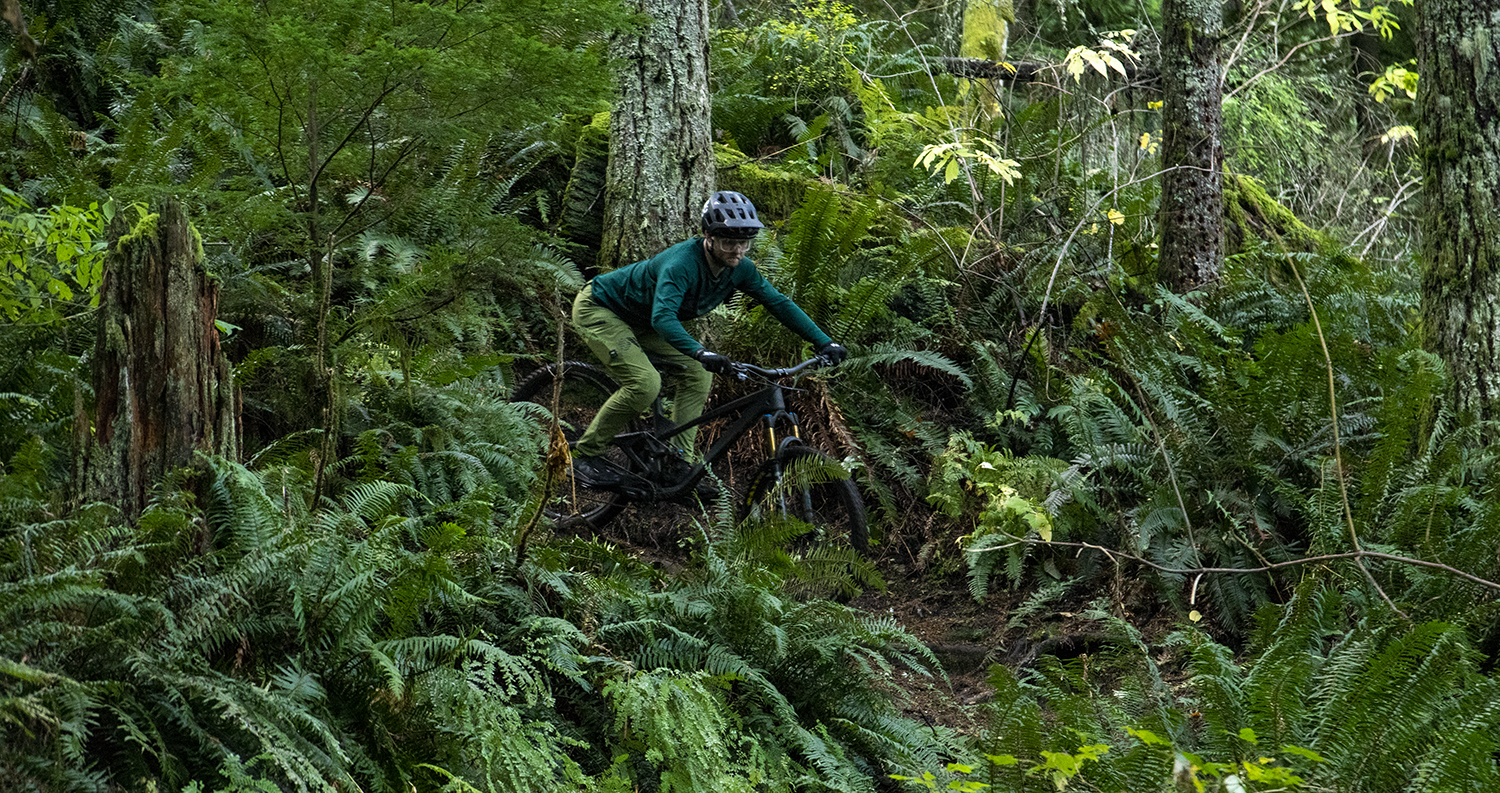
Intro
Most of our reviews are pretty long — and take a long time to produce — because we want to provide enough info for you to actually determine whether the gear we tested will work well for you.
But we get asked to check out an increasingly wide range of products, and sometimes, we just want to tell you about something we’ve been using and loving lately.
So we’ve rolled out a new monthly series — Stuff We Like — to keep you current on a broad range of stuff we’re currently digging.
And if there’s something you love that you think we ought to check out, drop us a note in the comment section below.
Sea to Summit Duffle Bag
MSRP: $129.95 – $199.95
Jed Doane: This bag is by far the best expedition duffel I’ve ever used — I first saw one strapped to a yak in Nepal, and then was reminded by a mention in Andrew Alexander King’s Denali episode of our GEAR:30 podcast (Ep 156). I’ve used a number of burly duffel bags including the iconic The North Face Base Camp Duffel and Patagonia’s Black Hole Duffel, and this Sea to Summit offering is my favorite for several reasons. One major feature is the massively oversized lid, which makes packing, unpacking, and living out of the bag much easier than with the smaller lids on the other duffels I’ve used.
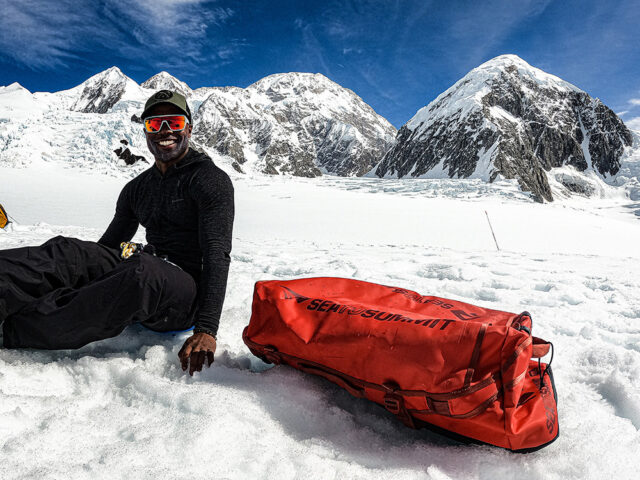
The 1000D fabric is extremely heavy duty and holds its shape well — it’s not as packable/compressible as the Black Hole, but aside from being slightly more difficult to store (I roll it up into a tube) I definitely prefer it. I decided to go for the massive 130L size, which I absolutely love. I easily stuffed several weeks’ worth of fishing, running, and camping gear into it with ease for a trip last fall. The main dual zipper is extremely tough, and the T-shaped pulls are easy to find and use with fumbling fingers even when the bag is stuffed. The backpack straps are built in a similarly burly fashion, and the bag carries well- I take public transit to the airport, which involves half a mile of walking, and have been really impressed by the load bearing, which is enabled by a circumferential yoke that the straps attach to. Sea to Summit designed the straps to be usable in many different configurations, but I find myself using the backpack straps exclusively. Along with travel, I also use it for almost every car camping trip — I’ll pack everything I need for a weekend in my living room and then can walk all my gear to harder-to-reach spots without taking multiple trips or having to carry plastic bins. Overall, I can’t say enough good things about this bag. It’s bomber, well-designed, and dependable.
Outdoor Research Stormcraft Down Parka
MSRP: $499
David Golay: Where I live in Western Washington doesn’t tend to get super cold in the winter, so I had convinced myself that I didn’t need a super warm winter jacket to get by around here. And while layering up with a bunch of lighter pieces definitely can work, too, this winter I bought myself the Stormcraft Down Parka from Outdoor Research, and it’s been a major life upgrade.
The thing is that while Washington may not be that cold, I am, a lot. I just run cold in general, so while a super burly down jacket is arguably overkill around here, it turns out that overkill is pretty awesome if you’re not being active and generating much body heat. And so that’s where the Stormcraft comes in.
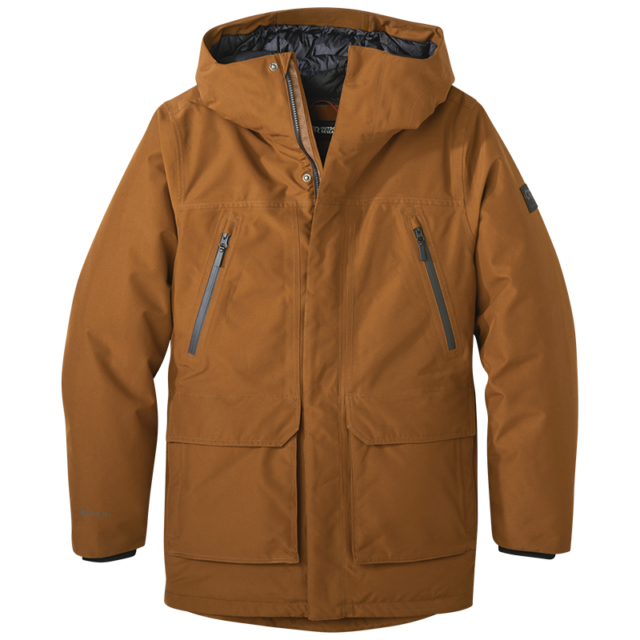
It’s a down insulated parka with a GoreTex outer shell, designed for casual use, and in that role it’s been fantastic. It’s warm, comfortable, and looks really good — basically perfect for wearing around town or for outdoor apres and the like. I’ve been happily wearing it whenever temperatures are below about 45° F (7.2° C) and I’m not being very active, usually with a sweatshirt underneath.
The fit is definitely on the loose, baggy side — especially through the body — but that also means that there’s plenty of room to comfortably layer underneath it (and again, I think it’s a really nice looking piece, if you’re not specifically after a trimmer fitting aesthetic). The pocket arrangement is great (and the hand pockets are lined with a very soft fleece material), the hood is adjustable and fits well, and though I’ve only had the Stormcraft for a few months now, it seems very well made and I expect it to hold up for years to come. It’s outstanding.
Tifosi Optics Swank XL
MSRP: $29.95
Gordon Gianniny: I’m always on the hunt for affordable but functional running sunglasses – mostly cause I seem to be really good at losing / breaking them for some reason. Tifosi’s new Swank XL falls squarely into the “functional but won’t break the bank” category with a fairly reasonable $29.99 price tag.
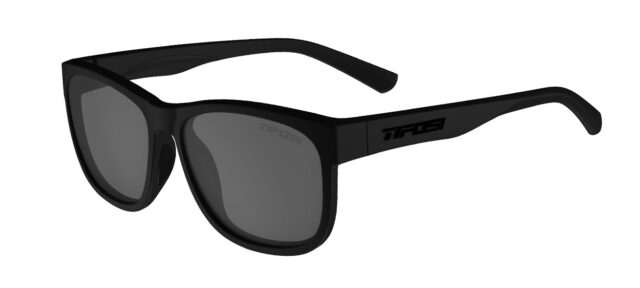
STFU Bike
MSRP: $29.95–$34.95
David: Noisy bikes are annoying, and while things like clutch rear derailleurs and better built-in chain slap protection on frames have gone a long way towards quieting things down, plenty of bikes could still use some more help to keep the chain in check and noise down. And that’s the goal of the not-so-subtly-named STFU Bike.
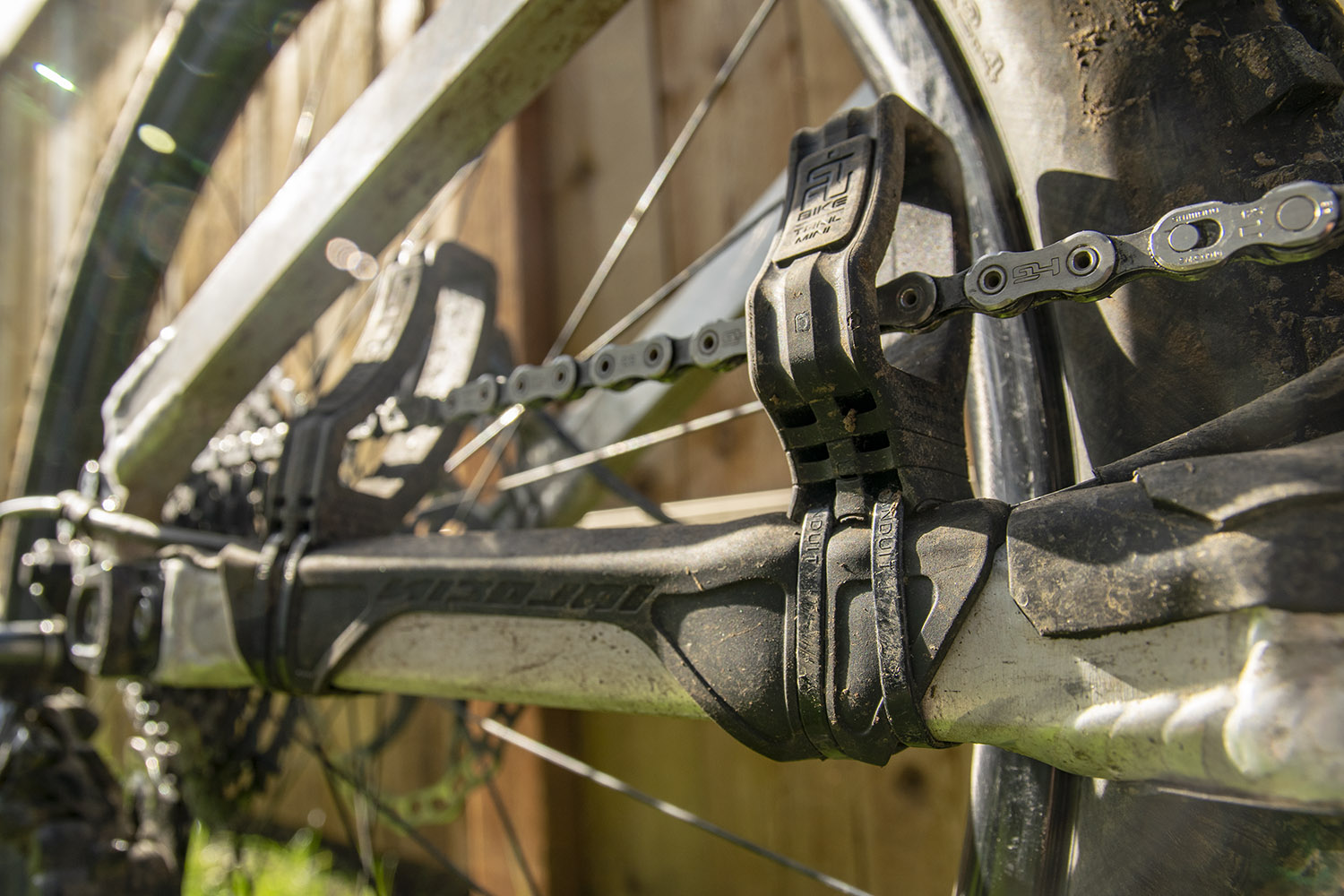
The design is simple, but clever — it’s essentially a pair of molded rubber and plastic loops that you zip tie to the chainstay and route the chain through, to keep it from bouncing around and pinging off the frame. Installation requires a little bit of measuring to set the position of the loops, and to determine what length to trim the mounting tower to for a given bike (check out their website for more detailed instructions) but it’s a simple 15 minute job.
I’ve been using the Trail version, designed for 12-speed wide range cassettes, but versions for 10, 7, and single-speed DH bike drivetrains are also available. Once installed properly, there’s no chain contact in any of the gears under normal pedaling, and it’s done an excellent job of quieting down chain slap. The Nicolai G1 that I have the STFU Bike mounted to has, frankly, fairly lackluster built-in protection, and while I was able to largely quiet things down with a whole lot of mastic tape before installing the STFU Bike, the latter is in many ways an easier, more elegant solution — and it’s significantly more effective.
STFU Bike arguably looks a little goofy, but it absolutely does what the name suggests, for not a whole lot of money or added weight (75 g uncut for the Trail version I’ve been using, 48 g once trimmed to size for my particular application). I’m a fan.
Zipfit Gara LV
MSRP: $475
David: A number of Blister reviewers have had very positive feedback on a few different models of Zipfit ski boot liners over the years, and you can now add me to that list. I’ve been using the Gara LV in my alpine boots this season, and the combination of an extremely precise fit and excellent comfort that they offer has been very impressive.
I’ve been skiing the Gara LV in the also-impressive Head Raptor 140RS (which I’ve now spent several seasons in) and while that stock liner worked reasonably well for me overall, the Gara LV is a substantial improvement in a few areas, and given what our other reviewers have found re: Zipfit durability, I’ve got high hopes that it’ll continue to perform well for a lot longer — the stock liners were pretty badly packed out by the time I retired them.
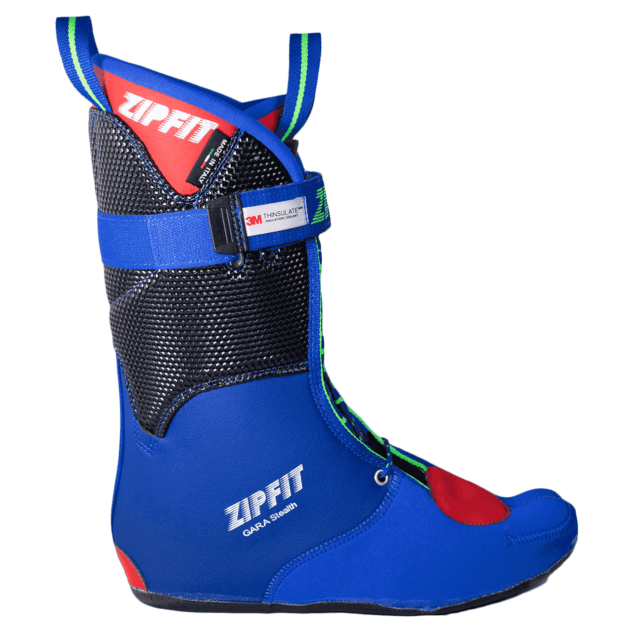
Nathan QuickSqueeze Lite 12oz
MSRP: 27.00
Gordon: I’ll admit to being pretty picky when it comes to running handhelds. I’m continually amazed by how many brands just slap a cheap hand strap on a regular bike bottle, charge you $30, and call it a day — personally I can’t stand the obnoxious sloshing and uncomfortable grips that generally accompany this approach. Luckily the Nathan QuickSqueeze Lite 12oz goes well above that, with a carefully designed bottle and strap that make it way more comfortable and functional than most other handhelds I’ve tested.
The bottle still has a flat bottom for easy filling, but it’s molded to fit comfortably into your hand — and the strap is simple but comfortable, even on longer runs (2+ hours). The bottle’s flattened shape also makes it super easy to squeeze and drink out of while running, which is more than I can say for most traditional handhelds.
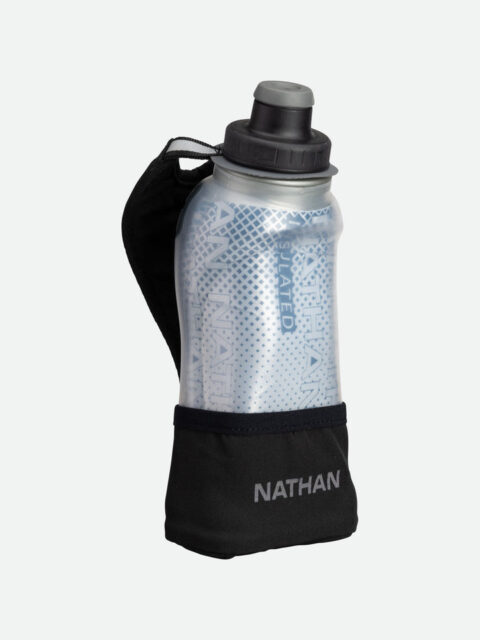
POC Devour Sunglasses
MSRP: $250
David: Riding in the PNW, I don’t tend to really need eye protection from the sun — even if it is out, the overwhelming majority of our riding is under heavy tree cover. But what I do need — especially in the winter months — is something to keep mud out of my eyes. And the POC Devour glasses are, by a big margin, the best solution I’ve found to date.
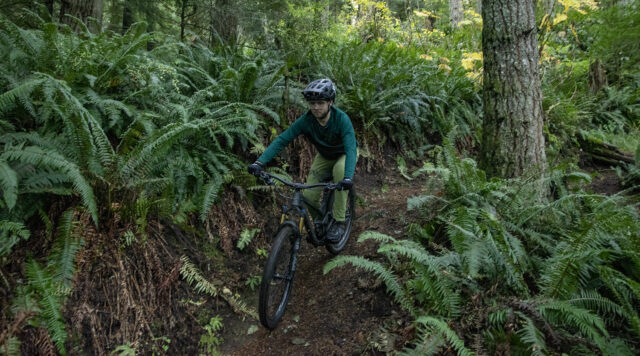
That may sound like faint praise — you’d think that just about anything that covers your eyes would work, right? Unfortunately, the reality is more complicated than that. The main problem is that if it’s wet enough out for me to want eye protection, it’s, well, wet out. And more likely than not, fairly cool, too. And under those conditions, fogging is a huge problem. Goggles are the best solution just for keeping mud out of your eyes, since they’re fully sealed around your face, but the worst for fogging since that same seal blocks a lot of airflow. A lot of smaller glasses withstand fogging better, but don’t have enough coverage to fully block tire spray, and clods of mud still make their way around the lenses.
And that’s exactly why the Devour works so well. They’re absolutely gigantic glasses that offer great coverage while still having good airflow to keep fogging at bay. I think the shape and design deserve the bulk of the credit, but the lens treatment (POC calls it Ri-Pel) is also quite effective at staving off fogging and helping water dropplets roll off, too. And the optics are excellent (both from the clear lens and the lightly tinted amber one that came with the glasses), the adjustable temples are comfortable, and the lens swap —while not a fancy magnetic affair — is quick and easy.
At $250, the Devour is undeniably expensive, and the looks are probably a bit polarizing. But they’re so much better for wet weather than any other on-bike eye protection that I’ve tried to date that I’m happy to overlook all that. I’m honestly surprised by how much better they work for me than the other glasses and goggles I’ve tried, but I’m completely sold.

I love these “Stuff We Like” features! I’m in the market for something like the Outdoor Research Stormcraft Down Parka and hadn’t heard of it before.
I happen to own a Sea to Summit duffle and mostly love it because of how burly the construction is, but have one big gripe: it’s not comfortable to carry as a backpack, which is the only mode I want to use it in for heavy loads. The straps are so stiff (I assume an unfortunately byproduct of being bomb proof) without much padding, so they dig into my shoulders when carrying. I also really want a removable hip belt for heavy loads. No backpack is going to be comfortable carrying 40lbs without a hip belt.